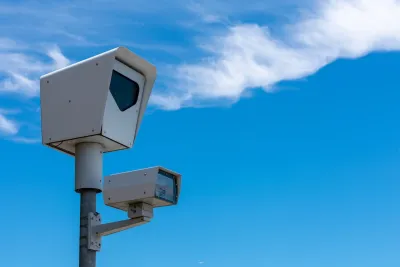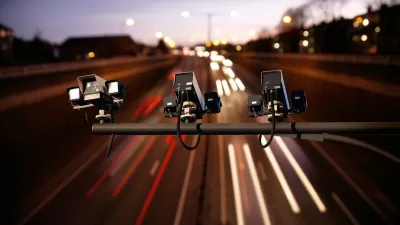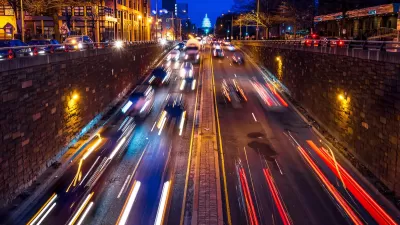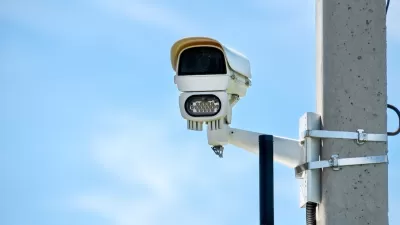Countering claims made by the Chicago Tribune that automated enforcement doesn’t improve safety, Streetsblog Chicago lays out the data showing how traffic safety fared in camera zones.

Automated traffic enforcement cameras are not a steady, permanent source of revenue for cities — nor should they be, argues John Greenfield in Streetsblog Chicago.
Addressing claims that speed cameras are simply a cash grab for the city, Greenfield notes that “These installations shouldn't be expected to produce a steady stream of ticket money that never declines. Instead, the number of fines issued by a particular camera should get smaller, as more motorists realize that if they drive dangerously near them, they'll have to pay a price.”
In a perfect world, the cameras would eventually issue zero tickets, because motorists would learn not to speed by more than 5 mph in their presence.
To ensure speeding tickets don’t amount to a regressive tax, Greenfield writes that the city could reinstate its prior policy of discounting speeding tickets for low-income residents.
When it comes to safety, claims that cameras don’t help seem to be unfounded. A Chicago study found that “Between 2012-2013 and 2022-2023, while the total number of crashes rose by 28 percent citywide, it only increased by 2 percent near the speed cameras.” At the same time, injuries and fatalities fell by 11 percent near cameras. Bicycle and pedestrian collisions dropped by a dramatic 46 percent near cameras.
Ultimately, Greenfield asks, “Is it really such a virulent imposition on motorists to ask them not to drive at speeds that can easily kill other road users, or themselves?”

Alabama: Trump Terminates Settlements for Black Communities Harmed By Raw Sewage
Trump deemed the landmark civil rights agreement “illegal DEI and environmental justice policy.”

Planetizen Federal Action Tracker
A weekly monitor of how Trump’s orders and actions are impacting planners and planning in America.

The 120 Year Old Tiny Home Villages That Sheltered San Francisco’s Earthquake Refugees
More than a century ago, San Francisco mobilized to house thousands of residents displaced by the 1906 earthquake. Could their strategy offer a model for the present?

In Both Crashes and Crime, Public Transportation is Far Safer than Driving
Contrary to popular assumptions, public transportation has far lower crash and crime rates than automobile travel. For safer communities, improve and encourage transit travel.

Report: Zoning Reforms Should Complement Nashville’s Ambitious Transit Plan
Without reform, restrictive zoning codes will limit the impact of the city’s planned transit expansion and could exclude some of the residents who depend on transit the most.

Judge Orders Release of Frozen IRA, IIJA Funding
The decision is a victory for environmental groups who charged that freezing funds for critical infrastructure and disaster response programs caused “real and irreparable harm” to communities.
Urban Design for Planners 1: Software Tools
This six-course series explores essential urban design concepts using open source software and equips planners with the tools they need to participate fully in the urban design process.
Planning for Universal Design
Learn the tools for implementing Universal Design in planning regulations.
Clanton & Associates, Inc.
Jessamine County Fiscal Court
Institute for Housing and Urban Development Studies (IHS)
City of Grandview
Harvard GSD Executive Education
Toledo-Lucas County Plan Commissions
Salt Lake City
NYU Wagner Graduate School of Public Service





























